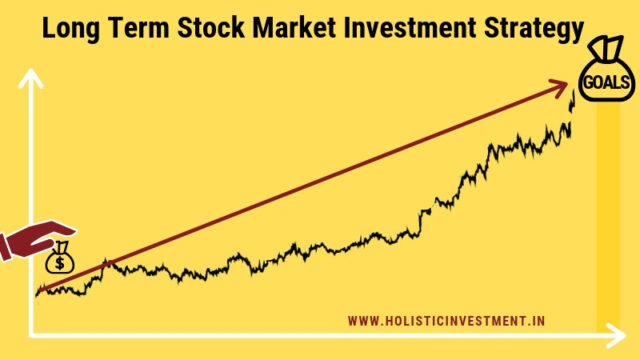The stock market has long been considered a viable avenue for achieving financial growth and securing long-term wealth. While short-term trading can yield quick profits, it is the long-term investment strategies that have consistently proven to be more reliable and profitable over time. The aim of this log is to explore various long-term investment strategies that can help investors achieve consistent profits in the stock market.
The Importance of Long-term Investment
Emphasizing the importance of long-term investment in the stock market cannot be overstated. Historical data has shown that markets tend to rise over the long term, despite short-term volatility. By focusing on long-term investment strategies, investors are better positioned to ride out market fluctuations and capitalize on overall market growth. Additionally, long-term investments benefit from the power of compounding, where the returns on investments generate their own earnings, leading to exponential growth over time.
Diversification
Diversification is a fundamental strategy in long-term investing. By spreading investments across various asset classes, sectors, and geographical regions, risk is minimized. If one investment performs poorly, others may perform well, balancing the overall portfolio performance. Diversification can be achieved through various means, including investing in mutual funds, exchange-traded funds (ETFs), and index funds, which inherently offer a diversified mix of assets.
Dollar-Cost Averaging
Dollar-cost averaging (DCA) is another effective long-term investment strategy. It involves regularly investing a fixed amount of money into the market, regardless of the current market conditions. This approach reduces the impact of market volatility by averaging the purchase price of investments over time. Investors are encouraged to set a consistent investment schedule, such as monthly or quarterly, to take advantage of this strategy. Over the long term, dollar-cost averaging can lead to a lower average cost per share and mitigate the risks associated with market timing.
Value Investing
Value investing, a strategy popularized by renowned investors like Warren Buffett, focuses on purchasing stocks that are undervalued by the market. By conducting thorough fundamental analysis, investors identify companies with strong financials, competitive advantages, and growth potential that are trading below their intrinsic value. The belief is that the market will eventually recognize the true value of these stocks, leading to price appreciation. Patience and diligent research are crucial in value investing, as it may take time for undervalued stocks to reach their full potential.
Growth Investing
Contrary to value investing, growth investing targets companies that exhibit strong potential for future growth. These companies are often characterized by high earnings growth rates, innovative products or services, and expanding market share. Although growth stocks can be more volatile and often trade at higher valuations, they offer substantial returns over the long term. Investors employing this strategy should focus on sectors with significant growth potential, such as technology, healthcare, and renewable energy.
Dividend Investing
Dividend investing involves selecting stocks that regularly pay dividends, which are portions of a company’s earnings distributed to shareholders. Dividends provide a steady income stream and can be reinvested to purchase additional shares, further enhancing the compounding effect. Companies with a history of consistent dividend payments and dividend growth are typically financially stable and less susceptible to market downturns. This strategy is particularly appealing to investors seeking a balance between income and capital appreciation.
Buy and Hold
The buy-and-hold strategy is predicated on the idea that the stock market will generate positive returns over the long term, despite short-term fluctuations. Investors who adopt this approach purchase stocks with the intention of holding them for an extended period, often decades. This strategy minimizes transaction costs and capital gains taxes while allowing investments to grow uninterrupted. The success of the buy-and-hold strategy relies on selecting high-quality companies with strong fundamentals and enduring competitive advantages.
Rebalancing
Regularly rebalancing the investment portfolio is essential to maintaining the desired asset allocation and risk tolerance. Over time, the performance of different assets will vary, causing the portfolio to drift from its original allocation. By periodically reviewing and adjusting the portfolio, investors ensure that it remains aligned with their long-term investment goals. Rebalancing can be done annually or semi-annually and may involve selling overperforming assets and buying underperforming ones.
Monitoring and Patience
Long-term investing requires continuous monitoring and patience. While the temptation to react to short-term market movements can be strong, it is important to stay focused on long-term objectives. Periodic reviews of the investment portfolio, coupled with disciplined adherence to the chosen strategy, are vital. Patience is essential, as market cycles can be unpredictable, and it may take years for investments to realize their full potential.
Conclusion
Long-term investment strategies in the stock market are designed to achieve consistent profits by leveraging time, diversification, and the power of compounding. Whether through value investing, growth investing, dividend investing, or buy-and-hold strategies, investors can build a robust portfolio that withstands market volatility and generates sustainable returns. The key to success lies in thorough research, disciplined execution, and unwavering patience. By adopting these strategies, investors are better positioned to achieve their financial goals and secure long-term wealth.










